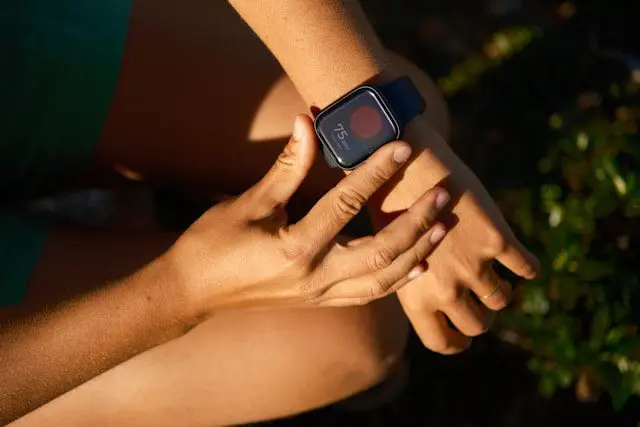Key Takeaways
- Get Medical Clearance First: Ensure it’s safe to start by consulting your doctor.
- Invest in Proper Gear: Cushioned running shoes and moisture-wicking apparel prevent injury and chafing.
- Follow a Run/Walk Plan: Begin with short jog-walk intervals and progress gradually over 8–12 weeks.
- Prioritize Warm-Up & Recovery: Dynamic warm-ups, post-run stretching, and rest days protect your body.
- Build Confidence & Consistency: Set SMART goals, celebrate small wins, and lean on a support system.
Are you ready to lace up those sneakers and hit the pavement? If you’re wondering how to start running when overweight and out of shape, you’re in the right place. Starting a running routine can feel daunting, but here’s the truth: every runner, regardless of size or shape, began somewhere.
Your decision to start running is a powerful first step. In addition to its health benefits, running will help you push your limits, build mental toughness, and find hidden strength.This guide will take you from couch potato to 5K finisher.

Table of Contents
Benefits of Running | 1. Consult Your Doctor | 2. Essential Gear | 3. Stretching and Flexibility | 4. Use Apps | 5. Proper Form | 6. Prevent Injuries | 7. Rest and Recovery | 8. Weather Considerations| 9. Staying Motivated | FAQs | Wrapping Up
The Benefits of Running
- Boost Cardiovascular Health: Running is a fantastic cardio workout. It strengthens your heart, improves circulation, and can lower blood pressure over time.
- Accelerate Weight Loss: While weight loss shouldn’t be the sole focus, it’s often a welcome side effect of regular running. Running is a high-intensity exercise and burns calories with high efficiency.
- Improve Mental Well-being: The “runner’s high” isn’t a myth! Running releases endorphins, which can boost mood and reduce stress. Many runners say their self-esteem and body image improve as they progress.
1. Consult Your Doctor
When overweight, it behooves you to consult your doctor. They can:
- Assess your health and fitness level
- Identify any potential risks or limitations
- Provide personalized advice based on your medical history
- Recommend any necessary precautions or modifications
Your doctor’s guidance ensures you are starting your running journey safely and setting yourself up for long-term success.
2. Get the Right Gear
Investing in the right gear can make a world of difference when you’re starting to run. Here’s what you need to focus on:
Find the Right Running Shoes
Your feet are your foundation, so choose your running shoes wisely. Look for:
- Proper cushioning to absorb impact
- Good arch support
- A wide toe box for comfort
- Stability features if you overpronate
Consider visiting a specialty running store for a professional fitting. They can analyze your gait and recommend the best shoes for your needs.
Choose the Right Clothing
Comfort is key when it comes to running clothes. Opt for:
- Moisture-wicking fabrics to keep you dry
- Breathable materials for temperature regulation
- Compression shorts to prevent chafing
Remember, you don’t need to break the bank. Start with a few quality pieces and build your running wardrobe as you progress.
Using Wearable Technology to Track Your Progress

Devices like fitness trackers and smartwatches can enhance your running experience. They track things like:
- Distance
- Pace
- Heart rate
- Heart rate variability
- Sleep
Some even motivate you with challenges and achievements. It adds a fun, gamified element to your running journey. These metrics are important for beginner runners to monitor progress.
3. Importance of Stretching and Flexibility
Stretching is often overlooked, but it’s crucial. It prevents injuries and improves performance. Here’s how to incorporate it into your routine:
Pre-Run Warm-Up Routines
Before you run, focus on dynamic stretches to warm up your muscles:
- Leg swings: Hold onto a wall for balance and swing each leg forward and back, then side to side. This helps loosen your hips and hamstrings.
- Arm circles: Make large circles with your arms, both forward and backward. This warms up your shoulders and upper back.
- Gentle lunges: Step forward into a lunge, then return to standing. Alternate legs. This stretch targets your quads and hip flexors.
- High knees: Jog in place, lifting your knees high toward your chest. This warms up your legs and gets your heart rate up.

Post-Run Cool-Down and Stretching
After your run, cool down with a 3-5-minute walk, then move into these static stretches:
- Hamstring stretches: Sit on the ground with one leg extended and reach for your toes. Hold for 15-30 seconds, then switch legs.
- Quadriceps stretches: Standing on one leg, bring your heel towards your buttocks and hold your foot with your hand. Keep your knees close together. Hold, then switch legs.
- Calf stretches: Step one foot forward, keeping the back leg straight. Lean forward, feeling the stretch in your back calf. Hold, then switch legs.
- Hip flexor stretches: Kneel on one knee, with the other foot flat on the ground in front of you. Push your hips forward with a soft motion, feeling the stretch in the front of your hip. Hold, then switch sides.
Hold each stretch for 15-30 seconds, focusing on your breathing and relaxing into the stretch.
4. Use Apps to Create Your Running Plan
Instead of following a generic training schedule from the internet or guessing one of your own, I recommend using running apps that create personalized programs tailored to your current fitness level. Apps take the guesswork out of training and adjust your program based on your progress. Some sync with your fitness trackers to further customize your training.
Best Running Apps
I tried several apps and landed on these two as my top picks:
The free Adidas Running app is an excellent place to start for overweight beginners. It starts you off with a walk-run plan and gradually increases your running intervals while ensuring you don’t overdo it. The app tracks your progress and sends helpful reminders to keep you motivated.
As you advance in your running journey, you might want more advanced features. I upgraded to Runna (around $20/month). It offers more detailed and customizable training plans that sync with your fitness tracker and adapt based on your progress and performance.
Adapt Your Training
Remember that any training plan, even from an app, is a guide. Don’t hesitate to:
- Repeat workouts if you need more time
- Take extra rest days if you’re feeling overly fatigued
- Adjust the plan based on your schedule and fitness level
The key is to listen to your body.
5. Proper Running Form

After running for 30 years, here are the five best pieces of advice I’ve learned:
- Maintain good posture: Head up, shoulders relaxed, slight forward lean
- Arms swing like pendulums: Imagine there is a barrier down the middle of your body that prevents you from swinging your arms across it. This will increase your running efficiency and reduce stress on your neck and shoulders.
- Feet land under the body: This is the safest and most ergonomic way for your body to absorb the load of your foot striking the ground. I see so many runners’ feet mistakenly reaching and landing ahead of their bodies.
- 80% of weight should land midfoot: So many runners land on their heels, which is a side-effect of reaching your feet out in front of you and striding too long.
- Cadence: Some experts recommend a cadence of 180 strides per minute to shorten strides and reduce the forces that contribute to injury. This is sage advice. At my age, I am gassed at 180 and am more comfortable around 150. The key isn’t the number; it is short strides.
6. Prevent Injuries: Listen to Your Body
Injury prevention is crucial, especially when you’re starting out. Here’s what you need to know:
Common Injuries in Overweight Runners
Be aware of:
- Shin splints: Pain develops along the front of the shin, which is often caused by bad form.
- Knee pain: Can be caused by improper form or weak supporting muscles. Proper warm-ups and stretching help prevent this.
- Plantar fasciitis: Pain in the heel or bottom of the foot. Often worse in the morning or after periods of rest.
- Lower back pain: Can be caused by weak core muscles or poor posture while running. Strengthening your core with a supplemental mat Pilates program will help.
If you experience persistent pain, stop running and consult a healthcare professional.
7. Rest and Recovery

Rest is when your body adapts and gets stronger. Make sure to:
- Take rest days between runs
- Get adequate sleep
- Stay hydrated: this includes drinking water and other ways to stay hydrated
- Fuel your body with nutritious, plant-based foods
Remember, progress isn’t linear. Some days will be better than others, and that’s okay.
8. Weather Considerations
In the Army, we often said, “If it ain’t rainin’, we ain’t trainin’.” While there is some merit to this, I also found myself more often sick with colds and flu.
I would suggest listening to your body. If you feel up for it, go out and run in the rain. Don’t force a run though if you feel like you might get sick because of it.
If you decide to push through the elements here are some pointers:
Staying Safe in the Heat
- Run in the early morning or late evening
- Wear light, breathable clothing, long sleeves, and hats
- Stay hydrated: Camelbaks are great for carrying water without having to lug a bottle on your run
- Listen to your body and slow down if needed
Cold Weather Runs
- Dress in layers and take them off as you sweat to avoid soaking through your clothes
- Protect your extremities with gloves and a hat
- Warm up indoors before heading out
- Be cautious of ice and snow
9. Staying Motivated on Your Running Journey
Motivation can ebb and flow. Here’s how to keep your running spark alive:
Setting and Achieving Personal Goals
- Set both short-term and long-term goals. For example:
- Short term: complete a 5K
- Long term: Drop two inches off your waistline
- Make your goals SMART (Specific, Measurable, Achievable, Relevant, Time-bound)
Celebrate Achievements
Reward yourself for your discipline when you reach milestones. Celebrate your progress by:
- Keeping a running journal to track your achievements and reflect on your progress
- Sharing your achievements with friends or on social media for added motivation and support
- Treating yourself to new running gear after reaching a goal as a tangible reward for your hard work
Creating a Support System
- Share your goals with friends and family
- Find a running buddy. Running apps facilitate this

Frequently Asked Questions
How long until I can run a 5K?
For someone who is overweight and new to running but maintains consistent training and a healthy diet, it typically takes about 8-12 weeks to build up to running a continuous 5K. Remember, results will vary based on the individual.
How often should I run as an out-of-shape beginner?
It’s best to start with 2-3 run-walks per week. It’s crucial to prevent injuries and let your body adapt to the new stress of running. As you build endurance and your body adapts to running, you can gradually increase the frequency and duration of your runs.
Is it normal to feel pain when starting to run?
It’s normal to feel some leg muscle soreness when you start or intensify your running. However, sharp, persistent, or worsening pain while running is not normal. It could mean an injury. Always listen to your body and consult a doctor if you are concerned about pain you are having.
Can I run if I have joint problems?
Running with joint problems depends on the specific condition and its severity. Running, a high-impact sport, may worsen some joint issues. Others might improve from the increased mobility and strength of regular exercise. If you have joint problems, consult your doctor before starting a running program.
What should I eat before and after running?
Before running, especially for runs lasting less than an hour, you don’t need to eat much. A small snack of easy-to-digest carbs, 30 minutes before your run, can give you energy without causing digestive issues. Good options include a banana, a slice of toast with jam, or a small granola bar.

Wrapping Up: Embrace Your New Identity as a Runner
Learning how to start running when you are out-of-shape and overweight is a journey of self-discovery and empowerment. Embrace the challenge, celebrate your achievements, and most importantly, enjoy the run.
You’re not just becoming a runner; you’re becoming a stronger, healthier version of yourself. Lace up those shoes, step out that door, and run towards the new you.
Have you started your running journey? What challenges have you faced, and what tips would you share with other beginners? We’d love to hear from you in the comments below. And don’t forget to subscribe to our newsletter for more helpful fitness tips and motivation!
Related Resources
- Explore our expert advice on what to pack in a carry-on bag. From clothing to toiletries, we’ve got you covered for any type of trip.
- Learn the top 10 weird signs of stress you might be overlooking. It will help you manage stress and live a healthier life.
- Discover the inspiring journeys of 10 sober celebrities. Their stories show resilience, transformation, and growth.


Leave a Reply